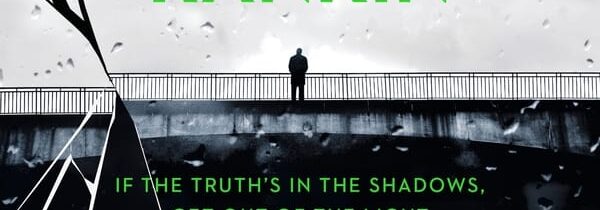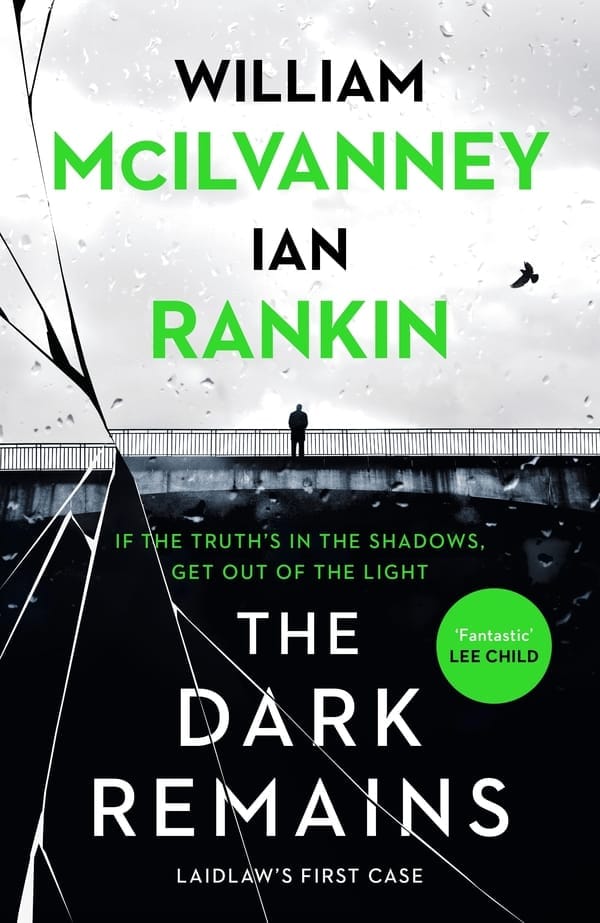THE DARK REMAINS By William McIlvanney and Ian Rankin (Canongate)
Often referred to as the ‘godfather of tartan noir’, William McIlvanney changed the face of Scottish crime fiction with his trilogy of books about scruffy Glasgow detective Jack Laidlaw. Featuring a dark philosophical view, gritty locations and well-fleshed out characters, McIlvanney inspired a generation of Scottish crime writers, such as Val McDermid, Ian Rankin and Christopher Brookmyre, who have since turned Scotland into powerhouse of noir writing.
When McIlvanney died in 2015 fans were left bemoaning the fact that there would be no more Laidlaw books. Fortunately, however, he left behind some scrappy notes, which have now been turned into a fourth book by Ian Rankin, creator of the equally influential series of books about Edinburgh detective John Rebus.
The end result is The Dark Remains (Canongate, 1 September 2021), which is set in 1972, five years before McIlvanney’s first Jack Laidlaw novel. The story has a typical McIlavnney feel to it, with the always fragile truce between Glasgow’s criminal heavyweights, Cam Colvin and John Rhodes, being unsettled when the corpse of Colvin’s right hand man is found in an alleyway on Rhodes patch. Is it the first shot in a territorial dispute between Colvin and Rhodes, or are there other players involved? With tensions in the city simmering, Laidlaw hits the streets to find the real killer.
In interviews Rankin has said that in addition to some sparse notes, McIlvanney had completed the beginning and the climax of the book, but had done little in-between. Rankin had to craft the bulk of the story, as well as determining who the killer was, as McIlvanney did not identify the culprit in his notes. Despite this joint approach, the combination of the two efforts is seamless and I could not identify which bits were written by whom. The story flows smoothly and seems to nicely capture the feel of Laidlaw, as I remember him, although there are plenty of Rankin touches.
The dialogue is real and gritty, and full of wit and cultural references. The descriptions of Glasgow feature Rankin’s fine eye for architectural nuances and the period context of television shows, politics and contemporary relationships are deftly woven into the story. There are also some customary flashes of Rankin humour:
“the post-mortem examination was already over. The body was being sewn together by an assistant, who kept his nose pressed close to the flesh as he worked. Laidlaw hoped it was a case of myopia rather than ghoulish pleasures.”
And there are the typically sharp Rankin lines that succinctly sum up a character:
“He knew that she had a prior appointment with the bottle of gin in her bag. The memory of its predecessor had been lingering on her breath as they’d talked.”
The plot itself is a good one, and Rankin skilfully builds the tension as the story makes it way to a neat resolution. There are some good scenes along the path to the tough final conclusion, including an encounter between Colvin and Rhodes, which bristles with unease and pending violence. Rhodes in particular, is a finely wrought character, although he seems to be channeling Rankin’s own character ‘Big Ger’ Cafferty at times, and all of the minor players, both police and criminals, have a credible feel to them.
In all, The Dark Remains is a very fine novel and is one of my favourite criminal reads of 2021 so far.
The Dark Remains is released in Australia on 31 August 2021 by Allen and Unwin and in the United Kingdom on 2 September 2021 by Canongate.



Straight on the ever growing list! Thanks again, Jeff, for bringing another good book to my attention.